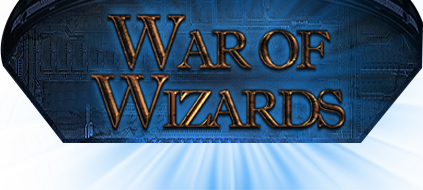6. Movement
Units and armies move about the world with the use of two types of commands: Move and Attack. The formats for these commands are discussed in the ORDERS section. Each terrain type requires a certain number of movement points (MP) to leave a shire (For example, Mountain costs 3 MP while Grassland costs 1. The rest you will find out during the game. We don't want to give away all the terrain types now). It costs the same amount of movement points even if a shire exit leads to another plane (ie. to the Underworld). Certain units will be able to move more easily (such as flying units). Details of these will also be revealed during the course of the game.
Note: units that move into a location using the attack command will only be able to move again that turn if the shire they issued the attack command on was unoccupied. Once a unit is involved in a battle, it will not move any further during that turn
All units can attempt to move from one shire to an adjacent shire (all adjacent shires will be listed in your turn report). If a unit has movement points remaining and if the first shire moved into is not occupied by hostile units it may continue to move. A player may only move units through a shire if it is controlled by him/herself, by a wizard with whom the player has an alliance, or if there are no unfriendly units present. This means that you are unable to move/attack out of shires if there are enemy units present and you are not in control of the shire, even if you started in that shire that same turn. So when setting ALLY NO you may not be able to move out. Also note that you will never be able to move all your units out of your city as this would result in your losing the game.
A note on movement points. All units with one or more movement points remaining may leave the shire they are currently in. When they arrive the movement cost of that move is deducted from their movement point total. If this results in a score of zero or less, they can move no further. The movement costs depend on four factors; the current season (add 1 MP during winter), the presence of PATHS or ROADS, the terrain type and any spells that are in effect. The movement cost of the land type you are moving from is reduced to 1 MP if there are ROADS built in this region. This applies only to all units moving from a ground location. All other move types (flying, tunneling) cost only 1 MP per shire.
In all the movement type orders, MOVE,ATTACK,FLYMOVE, ... the following guidelines apply. All multiple moves of units must take place as one order, starting at the location where the units reside. For example, you may not move a unit from shire one to shire two, in the shire one orders section, and then in the shire two orders try to move that unit to shire three. This will not work because at the time of processing the order the program checks that the unit does exist at this location. As all the actual moves are processed at a later date, the check will report that the specified units do not actually exist at shire two yet. To perform this example move, one must make the move a multiple destination move, listed under shire one.
To move to other regions you have to be in the shires 1, 2, 3, or 4 (Shire 5 can connect to other regions only on another plane. E.g., Underworld or Astral Plane). From each of these locations you will be given a list of connecting regions, if any exist. The map is basically symmetrical (other than the World of Varlania) but there are several special links which do not fit this pattern. This makes exploring and travelling that much more of a challenge and allows for a vast variety of possible unit moves. Below is a sample section of a world map.

A few points worth noting. Notice that the shires inside every region are identically organised. Also note that not every shire connects to another region. A shire numbered 1, 2, 3 or 4 will usually connect to two other regions (but may connect to zero, one or even more than two other regions in some circumstances). Finally, all troops can always move at least one shire per turn, or perform at least one state change (To Flying State, To Underground State or To Ground).
6.1 MOVEMENT TYPES
There are 3 different movement types for units: Ground, Flying and Tunnelling. Ground level movement is further divided into boat, land and water movement.
Ground Units are the standard unit. They use movement points every time they leave a shire until they reach 0 movement points, after which time they can not move until the next turn. Flying and Tunnelling units may act as land units using the MOVE command but also have the addition of the FLYMOVE/TUNNELMOVE commands. Note that you can take off/tunnel and ground in the same turn, however you cannot do the opposite. The air, ground and underground are treated as three separate areas and units in any of the three areas do not interact with units in the other two. While flying or tunneling, units only use one movement point per shire no matter what the terrain type.
Note that the flying and tunneling units can move in two states e.g., ground and air or underground and ground. The number of movement points that these units start with each turn depends on the movement type performed. If the MOVE or ATTACK orders are used then it is their ground movement value, otherwise they will use their flying/tunnelling movement value as they use the FLYMOVE/TUNNELMOVE related orders. For example, a giant worm that crawls across the ground might get one movement point, but if the worm dug down into the ground and traveled underground, it might get two movement points.
Moving from the ground state to flying/tunnelling or vice versa costs one movement point.
Some special units have the ability to swim in ocean regions and walk on land. These units will have a special attribute called "Water Movement". All normal units will report an error if you try to move them off land and into the ocean, but not these units. They can keep on moving over any terrain type.
The other movement type is naval. Ships can move in any ocean shire or shire that connects to an ocean shire (coast), where some ships may load/unload units. Direct movement from one coast region to another is not possible. Troop carrying ships will have a capacity number mentioned. This capacity is the number of units that can be transported. Foot units count as one while wandering monster, mounted, units with flying or tunneling movement and heroes count as two. All unit types with regard to their load are based on their unit type/battle position attribute and their movement abilities, which can be found in the unit abbreviations part of the report. Some may not seem logical i.e. Sprites count as 2 because they have a flying movement value of more than 0. Catapults are counted as five.
Note if there are any move related orders where the destination is the same as the from location then that move will be ignored and processing of the order will continue, except for FLYING and TUNNELLING move orders, where if the first destination is the same as the current shire, it means that the units are to leave their ground state and enter the FLYING/TUNNELLING state.
Also remember to be wary of wandering monsters, as they can be found Travelling all over the world, and in all planes and states.
6.2 MOVEMENT RULES
The rules of movement. When and how a particular move scenario will work.
TRAVELLING RULES
- You can only move from one shire to another if there is a link mentioned on your shire report to that other shire.
- You cannot FLY in Underworld regions.
- You cannot TUNNEL in Astral Plane regions.
- You cannot enter or leave Astral Plane or Underworld regions whilst tunneling or flying.
- Ships can only move to and from shires that are ocean or have an exit to an ocean shire (coast). You can not move directly from coast to coast.
- Units can only move on ocean shires if they are a ship or have the "Water Movement" attribute. Otherwise they must be placed on ships and to be transported. Units on board a ship do not become involved in combat unless it occurs in a coastal shire. Ships can be used to control coastal shires.
- Heroes and their armies do not have the "Water Movement" attribute, and as a result can only be transported across water on board a ship or by magical means.
- You may not move your last unit out of the capital as the city requires a garrison (heroes can not be used as a garrison).
MOVE AND ATTACK ORDER RULES
- For orders directed to a ship or hero, the ship/hero must be present. For orders directed to units, at least some of the requested unit type must be present. If more units are requested than are present, then the order will move the largest number it can.
- The ship/hero/units must have at least one movement point left.
- The ship/hero/units may only leave their current location if they are not in a hostile situation (there are no unallied ships, heroes or units at their current location), or if they are in the GROUND state and they or an ally controlled the shire at the beginning of the turn.
EXTRA MOVE ORDER RULES
-
The ship/hero/units may only enter a destination if one of the below is true
- you or an ally controls the destination location,
- all the players present at the location are yourself and your allies, if this critera is not meet met the move will be blocked but details of which enemy player blocked the unit will be revealed.
- there is no one present at the location.
If in a movement orders with multiple locations, one destination can not be reached (due to enemy presence or a wrong shire number) the remaining moves are cancelled.

